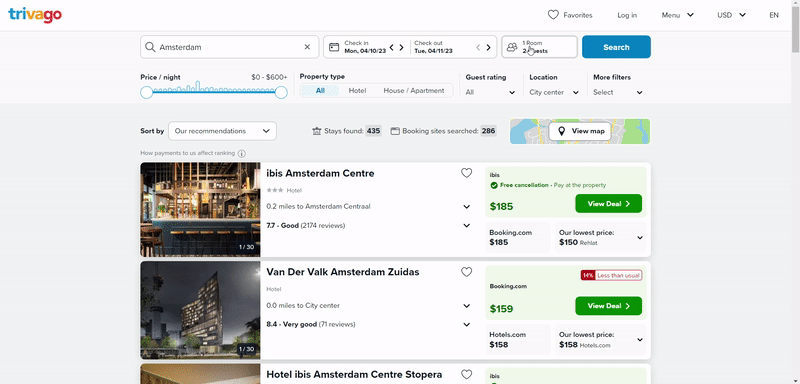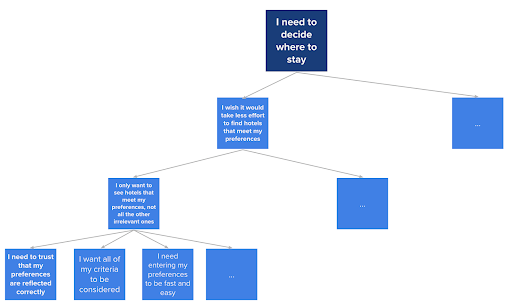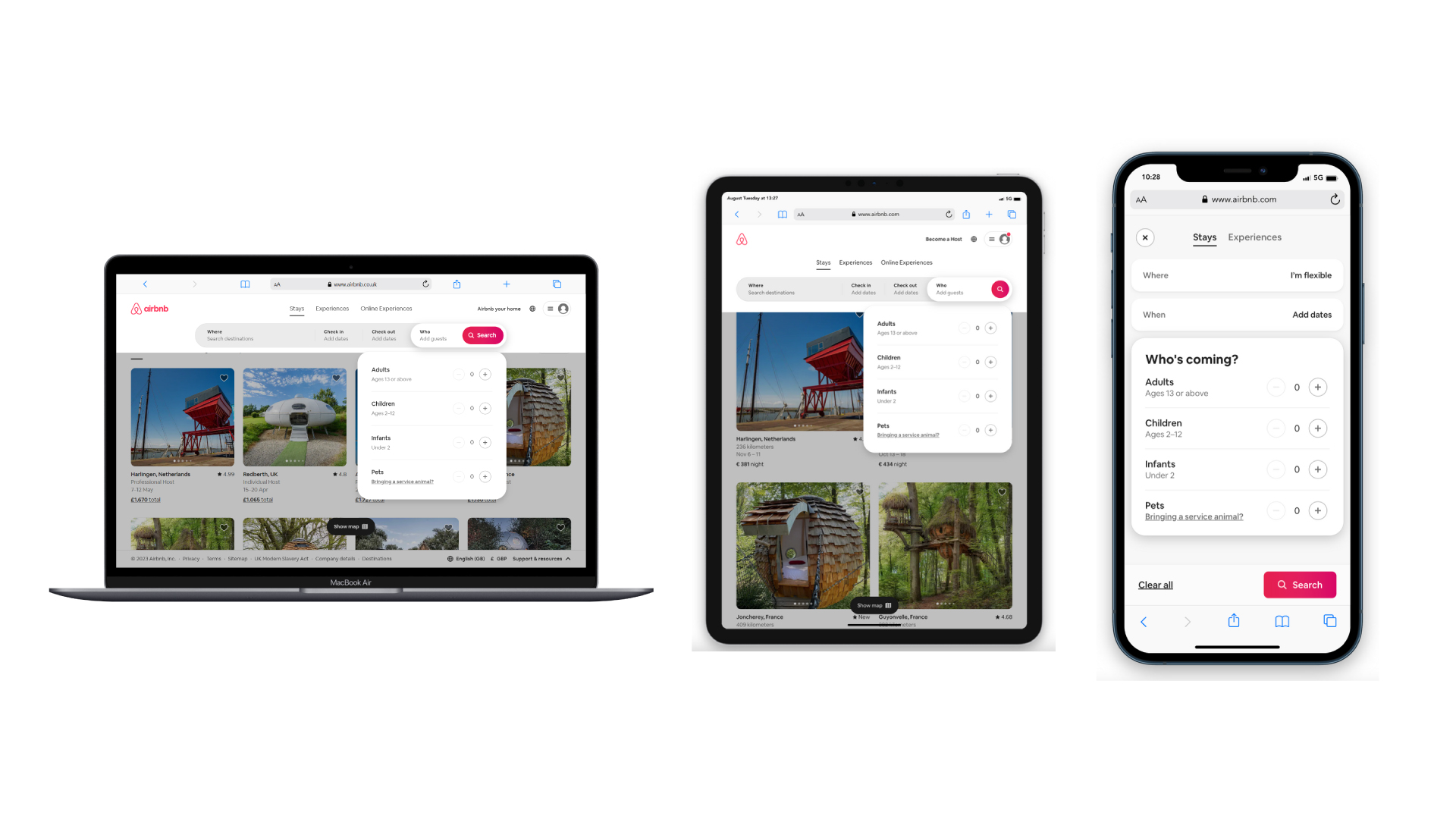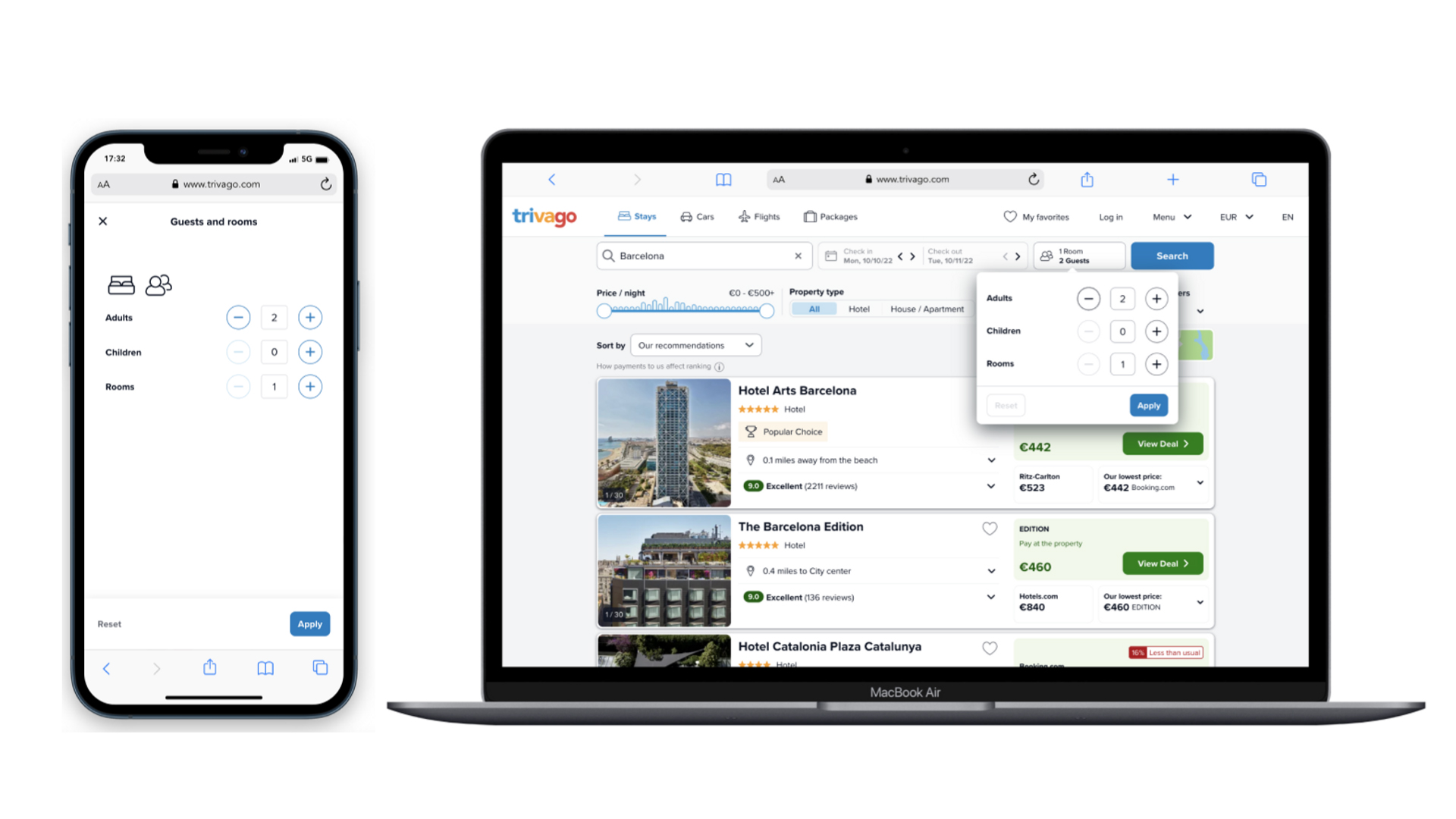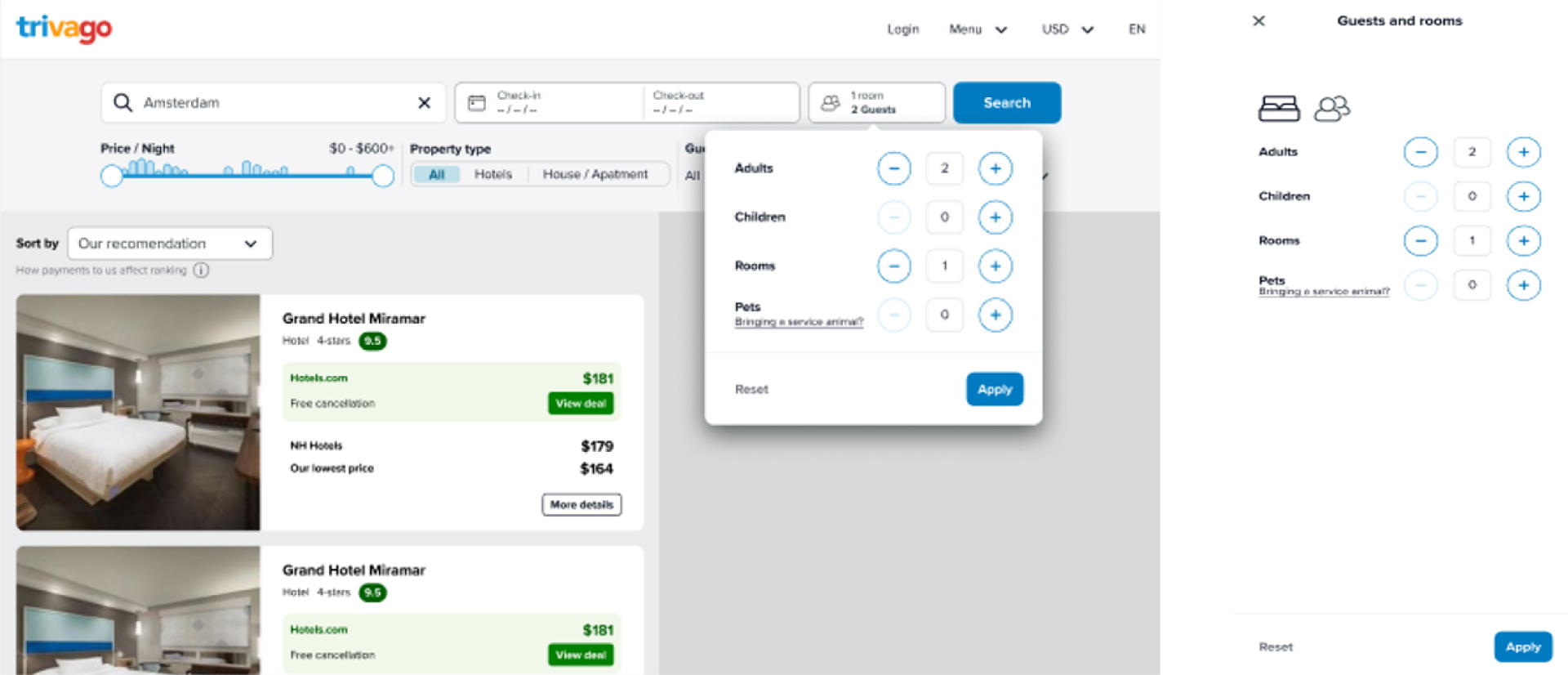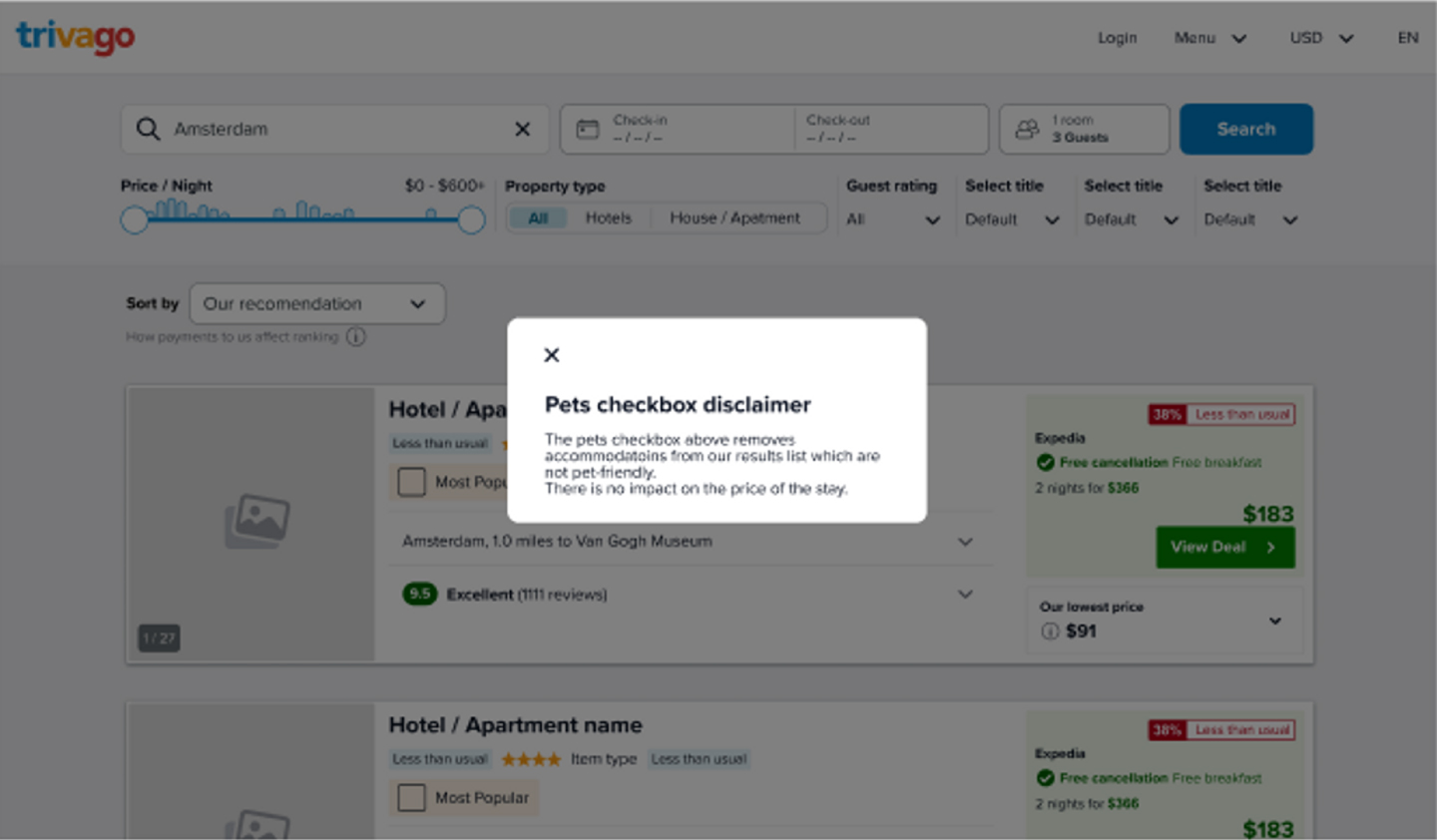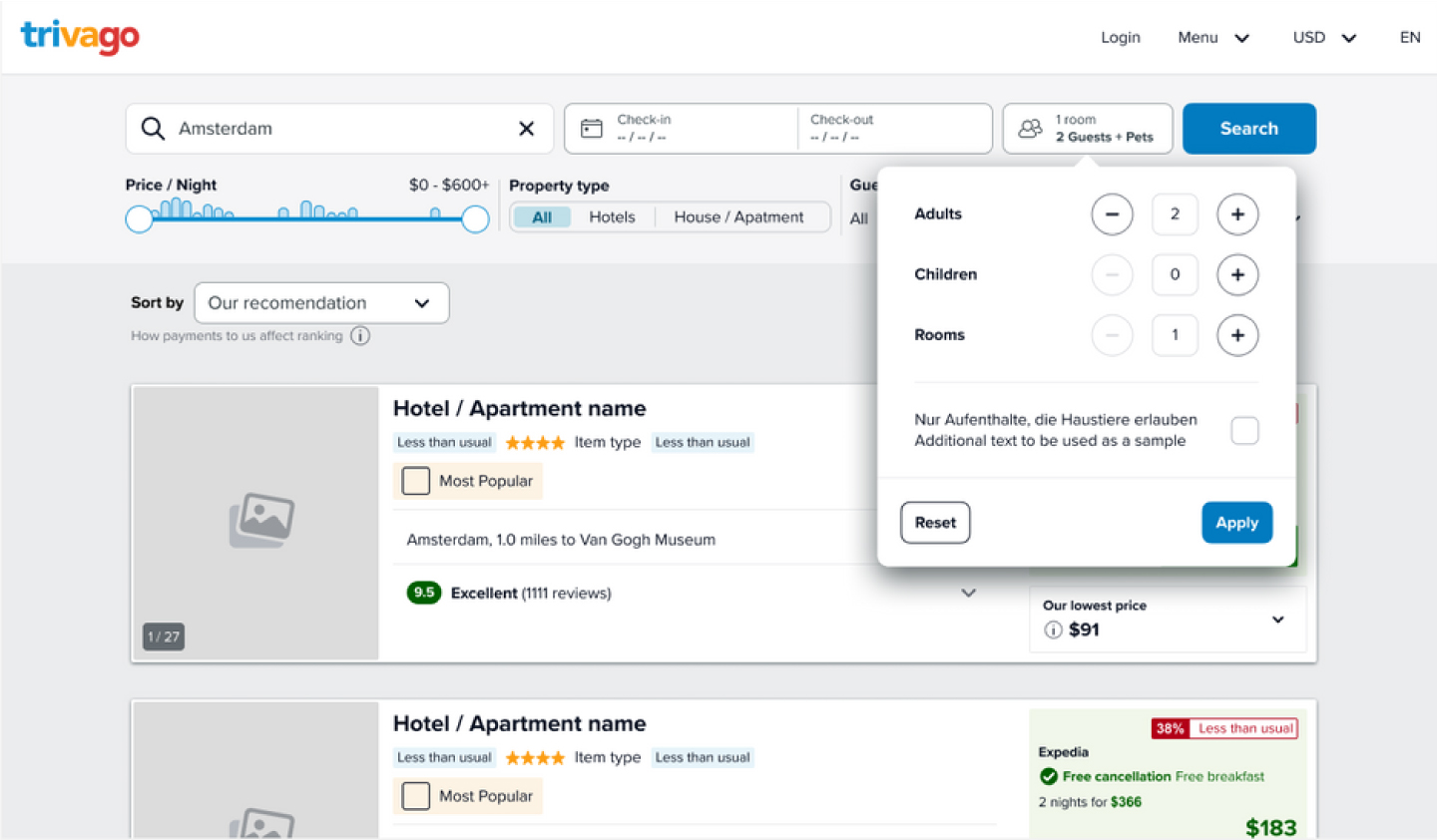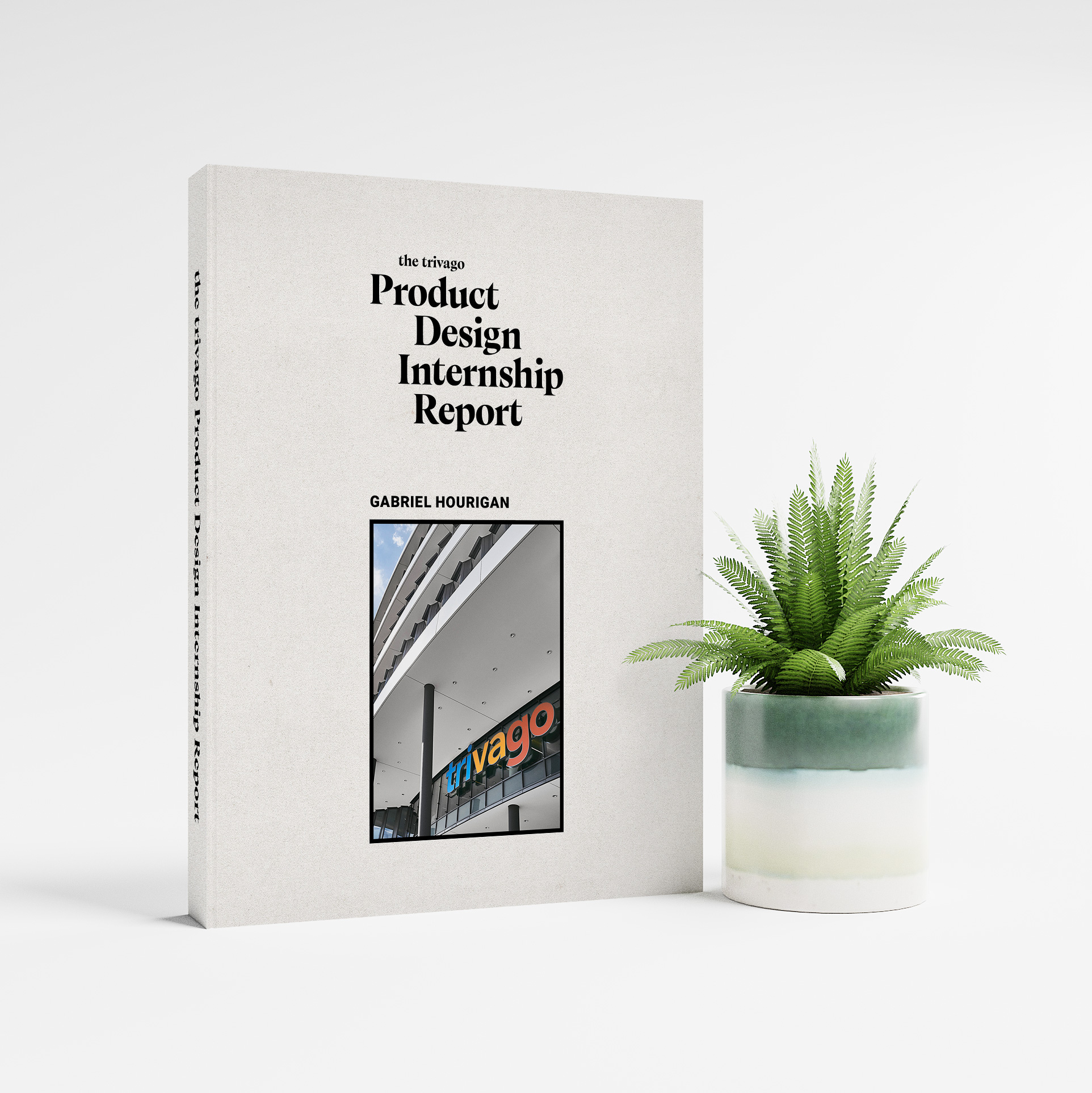End result
I spent half of 2022 having an absolute blast working in a hybrid set-up at trivago HQ in Dusseldorf. Where I completed
a mandatory internship for my information & communication design Bachelor's degree. This is one of multiple projects that
I worked on in an effort to learn about user intent through UX research with the purpose of improving the search experience
at trivago and help users move down the funnel.
Over the course of 3 weeks, I worked on improving access to non-negotiable criteria for travellers with a focus on the guest
selector. This included ux research, competitive analysis, high-fidelity wireframes, interaction design, ux writing and testing
which confirmed that the validity of the design.
All with the aim of make accommodation search more efficient and intuitive.
Check out the end result at www.trivago.com.
